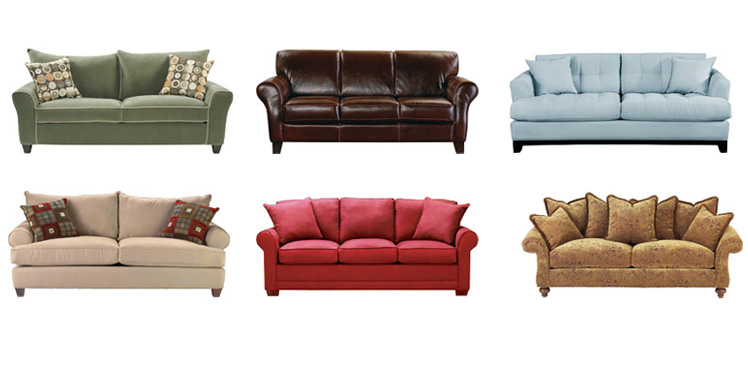
Summer is here, and that means heat. While 84% of U.S. homes use air conditioners, we can save money by using them less; after all, the typical U.S. home spends 17% of its annual energy bill on cooling — about $375.
We can save energy, too, which on the hottest summer days can have immediate payoffs: avoiding an electricity blackout caused by an overloaded power grid and lessening the load of air pollution emitted by power plants. The Daily Green has tried to find the best ways to stay cool without using the air conditioner. These tips are also useful when the electricity does go out and you are without the use of your air conditioner.
We start with some home and yard improvements that can keep your home cooler now and in the years to come, then give you some easy, cheap tips you can use right now to cool off. And remember, even if you have and use an air conditioner, these tips can help you reduce your need for it, saving energy and money.

1. Install attic insulation
While attic fans may not help significantly to cool your home, attic insulation can help a lot. Insulation keeps cooler air in your home from escaping through the ceiling. If you have central air, also seal ducts — especially at vents and registers, where you could be losing up to 20% of your cooled air. Although the tax benefits aren't as generous as they were, you can still get a tax credit worth 10% of the materials cost, up to $500.

2. Plant trees strategically
Your house gets hot because the sun beats down on it on hot summer days. Let nature help reduce your energy bills: Plant deciduous trees on the east and west sides of your home. In the summer, their broad leaves will shade your house, while in the winter, bare branches won't stop the sun's warmth from reaching your walls. Also consider planting trees or shrubs to shade high-heat areas — air conditioning units that emit heat, for instance, and driveways and walkways that absorb it.
Of course, sitting under a shady tree on a hot summer day isn't a bad way to pass the time, wherever the tree stands.

3. Install awnings
Just as window shades and shrubbery work to shield your home from the sun's rays, awnings can save you money on energy bills by cutting down on the heat your house absorbs. This is a purchase to make if you like the look.

4. Close your windows
It may seem counterintuitive, but on hot summer days, opening the windows will often make your home warmer, not cooler. Open your windows only at night if the air outside is cooler than inside, and close them — along with blinds and shades — before the sun hits your house in the morning.
When night falls, open windows wide, particularly those oriented toward prevailing winds, so you can take advantage of cross ventilation. This will allow cool night air to circulate, and prevent a good deal of the sun's heat from reaching indoors. You may also put houseplants — particularly larger potted trees — in front of sunny windows to absorb some of the sun's energy.

5. Use fans strategically
The fact is, many people don't know how to use fans effectively. Here are three ways fans can help:
Ceiling fans can create a pleasant breeze to cool a room significantly. Be sure that you have the fan running in the right direction: In the summer, you should feel the breeze blowing down. And remember, ceiling fans cool people, not rooms, so turn it off when you leave the room. If you're buying new ceiling fans, make sure you buy Energy Star fans that use 50% less energy than comparable models — a choice that will pay off in the long run.
Stand-alone fans placed directly in front of you, it's no surprise, help keep you cool. Add a spritz bottle and you can dramatically change your temperature; as the water evaporates off your skin, your body sheds heat.
A do-it-yourself wind tunnel is the third option; if there's a cool breeze, particularly at night, set one fan facing in on the side of your home receiving the wind, and another facing out on the opposite end of the house. You'll maximize the cooling power of a natural breeze.

6. Eat cold meals
Just as drinking a nice cold cocktail cools your body, eating cold food helps keep your internal temperature lower on a hot day. Try a simple watermelon salad, for instance, or a cold soup. If you do cook, use the grill or the microwave, or else you'll heat up your kitchen from using the oven and stove. And remember, kitchen appliances aren't the only devices that give off heat; limiting your use of electronics and lighting will help keep your home cooler, too.

7. Shut off the lights
While modern lighting, such as compact fluorescents and LEDs, is more efficient, incandescent light bulbs can produce as much heat as they do light. Energy Star-rated light bulbs produce 75% less heat, so consider that when replacing bulbs. It's always a good idea to shut off lights to save energy, and on hot summer days, it can also affect the temperature of the room. The same goes for many electronics, so consider unplugging any device that isn't needed because many electronics remain hot even in standby mode.

8. Take a cold shower or go swimming
It may sound obvious, but it's worth saying: If you're hot, cool off your core temperature by immersing yourself in cold water. Unless there's 100% humidity, the evaporation of water off your skin will further cool you once you emerge from the water. For a shortcut, use water and ice cubes to keep your wrists cool. Because your blood vessels are so close to the skin there, you'll feel cooler by applying cold directly to your blood

































